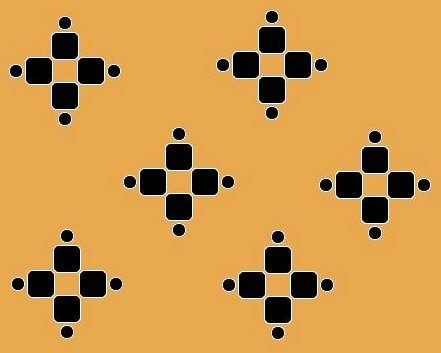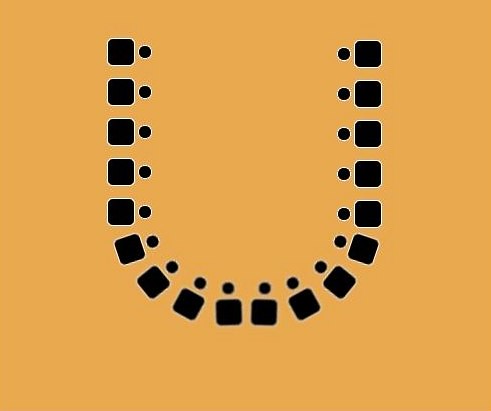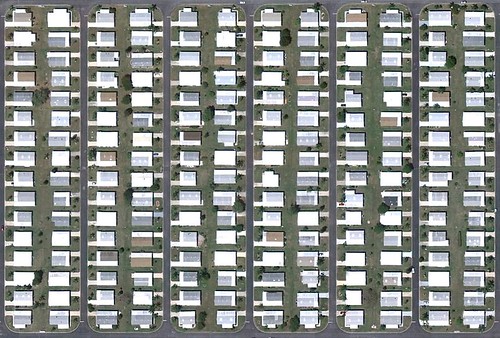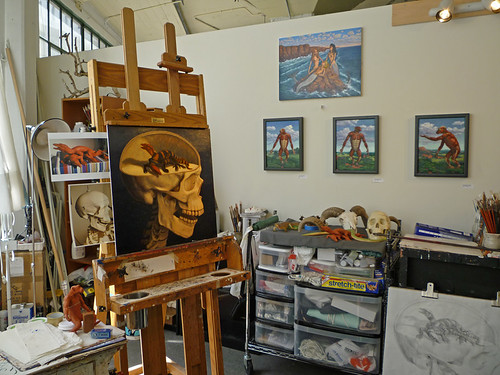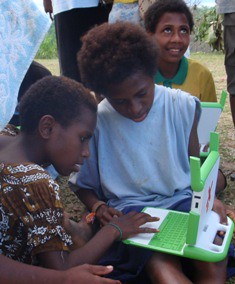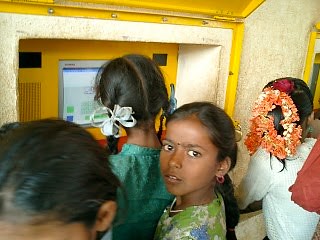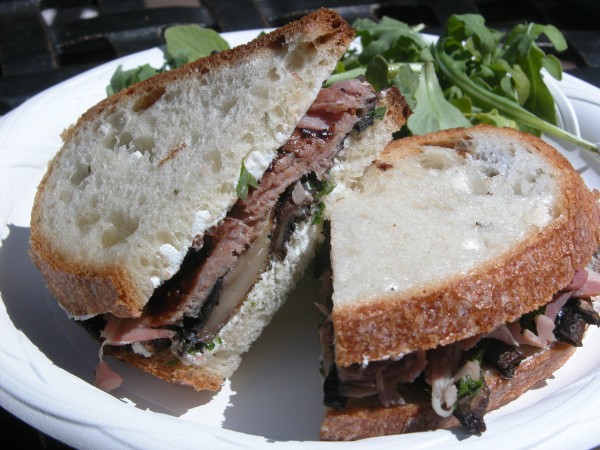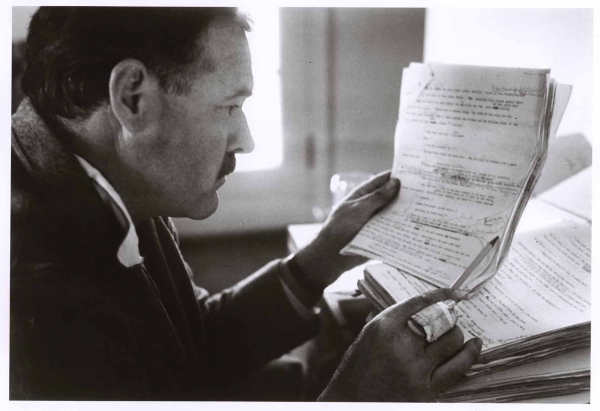Here’s the video if you don’t see it in your RSS Reader:
Tag Archives: Art
Design A Computer Lab
I’ve been contemplating how to set up our computer lab, and the conventional wisdom seems to have something missing.
The Four Best Computer Laboratory Layouts for Schools have a lot of similarities to subdivisions in southern Florida.
Subdivisions are built to squeeze the most humans into one place while keeping them from interacting, “We love our neighborhood, but no, we haven’t really gotten to know the neighbors yet.”
It seems both traditional computer lab setups and subdivisions are designed for individual, parallel play, in a confined space.
But all the research points in the other direction. In computer labs there should be talking. Groups of children talking, sharing, collaborating. Student “experts” (in things like inserting pictures or downloading audio files) should feel free to get up and walk all the way across the room, if somebody over there needs help they can provide. It should be natural ongoing collaboration. You can read about how children cooperatively learn on the computer by reading the blog post titled Interactive White Boards and Joint Computing here and watch the video by Sugata Mitra outlining the research on which Nicholas Negroponte’s one-laptop-per-child project is based. Sugata Mitra also has a blog.
AssortedStuff blogged we should organize schools to make innovative learners. The 4-minute video he includes from Stephen Johnson is worth watching:
Unfortunately for me, I’m not dealing with a “should.”
I’m dealing with a “do it” and “do it now.”
I’ve got a room, a bunch of computers, just under a thousand students, and need to sort it out in a real way, soon.
As a public school teacher, I’ve got unlimited resources, as long as I don’t spend any money. I’ve got a trailer, 24 rather good desktops without flatscreen monitors. And a decision to try and carve out the next model for computer labs.
We’ve done more with less…
It’s my firm conviction computers are not for teaching technology, but for teaching art. (Read more about art and computers in the blog post “We are Vermeer” here…)
Art casts a wide net including: writing, drawing, photography, design, music, layout, and the organizational and collaborative skills to get those tasks done.
Therefore, the space in which computers are used by children should seem more like a artist’s studio than a factory bench. It should be a creative atmosphere, not an assembly line.
Big Projects & Radical Collaboration:
We have a number of large projects going or in the works. Our 5th Grade does a large-scale project in Social Studies using technology, which Jenny, Jennifer Metcalfe and I presented, in part, at ISTE for the last couple of years.
We’re also gearing up to try and launch a school-wide online newspaper. It’s less a rehash of paper school newspapers with lunch menus and the weather, and more of an online environment in which we can showcase all the online work that’s going on throughout the school. I’ve outlined ideas on how that might work in the blog post titled “Online Workflow for School Newspaper Defined” here.
So the stage is set to create and use a room in which computers are housed for innovation and collaboration. Bringing about all the “we shoulds” about such things being written in educational publications. (That’s not a slam on AssortedStuff. He’s helping.)
Here’s a stab at “doing it.” Please feel free to toss peanuts from the gallery:
User requirements:
1) The students need to be organized in small groups of 4 to 6, each with a computer, but in a concave circle so they can easily see one another’s computer and share ideas, as well as how-to knowledge quickly and easily.
2) Monitors must all face one way, so a single teachers can see everything that’s going on at one time.
3) I have only desktops to work with, no budget and I’m setting up in a trailer (I know, only the best for the next generation.).
3) There should be a relaxed “living room” feel to the place and the artwork should be anything BUT schematics of computers and warnings about Internet safety. The artwork should be artwork. Inspiring.
How Media Works … A Synopsis
When using real social network media for education in the K-5 environment, this is how real the learning can feel, if we understand how to communicate it’s impact effectively.
We’re just starting to understand.
A 2nd grade class starts a wiki on animals. They write, post pictures, insert videos. They go home and show their parents, online. They show their brother, their sister, their friends. They review every other wiki page done by every other student in the classroom. They come in the next day and say, “I’ve got some ideas on how I can make my lion page better, will we be working on the wiki today?” This is a true story. In fact on the first day of spring break, one second grader added a video to her wiki page.
Imagine this happening with math worksheets. A child takes home their math work sheet. They show it to their parents, their brother, their sister, their friends. They review every other student’s math worksheet in the class, and come in the next day asking …
I don’t think so.
BUILDING TEACHER KNOWLEDGE AND SKILL SETS:
We’ve been working in this environment for four years, earnestly. Our teaching staff has come a long way in understanding how the technologies work, how they can be employed safely in a K-5 environment and all the ancillary issues.
In broad strokes it goes like this:
First one needs a knowledge of media. Then one needs a knowledge of kids’ perception of the use of media.
In the lower grades some of the kids’ perception of the media comes from their teachers, some from the media itself, but most comes from their peers.
Only then can impactful learning projects using media be developed.
After a teacher gets that far (and most of our teachers have gotten this far or are using ideas created by teachers at this school who have gotten there), only then does one have the pieces needed to position the projects in the kids’ minds. This is the next step for us. Only then would a teacher have the knowledge to communicate the impact on reality outside their student’s online projects effectively. Only then would a teacher have the knowledge to manage the social memes (even if only at the classroom or grade-level) which might flow out of such work as a reference/touchstone/review of content.
And when a teacher can do all that, students work on their projects in a vested, emotional and earnest way. Every moment of creation (writing, recording, reflecting, collaboration) becomes a moment in history seen, over time, repeatedly, by anyone. Everything becomes real.
We’re just starting to scratch the surface of the motivating aspects of social media as a tool for learning.
Finding the key to this (using online social global media to make students feel like the world cup players in the video) is one important goal I’m currently exploring with the folks at my school.
Trixie Whitley & Daniel Lanois – I’d rather go blind (Live)
Blipped by noretreat61
Lunch Today
I’ve been reading up on taking portraits.
This is what happens when you take the study of portraiture and apply it to something you truly love.
Click on the photo for a closer look. Click on it again to get closer. (I think it’s tasting you back.)


